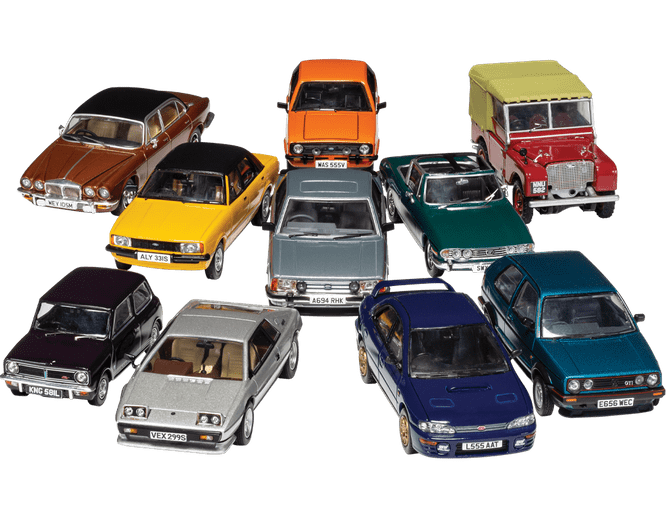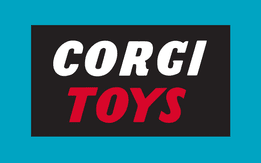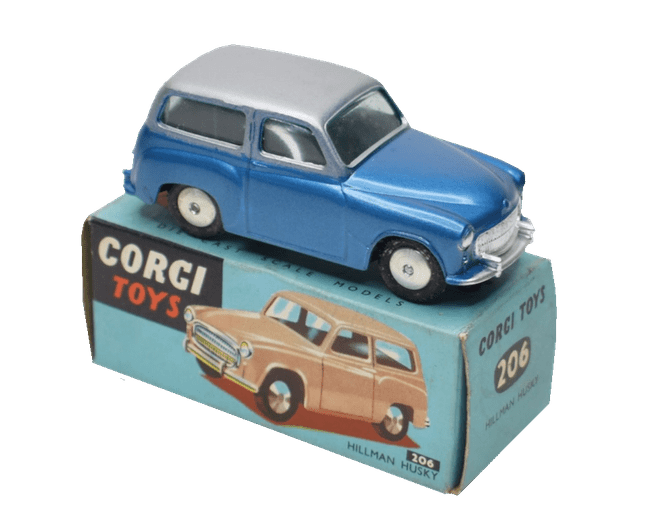Introduction
Corgi’s story begins in 1932, when toy manufacturer Philip Ullmann emigrated from Germany to the United Kingdom. Ullmann already had 21 years of experience in the toy industry, and soon after arriving in the UK he founded the Mettoy Company of Northampton, who began producing a range of tinplate metal wind-up toys.
Alongside Ullmann’s beginnings in the UK toy industry, rival tinplate toys manufacturer Meccano Ltd – owned by Frank Hornby, a name you might recognise – began releasing smaller die-cast metal car models under the name Dinky Toys. The smaller scale toys proved extremely popular, and following a pause in toy production for both companies during the Second World War, the market began to increase dramatically with Matchbox Toys arriving in 1953. The team at Mettoy realised that to capture a good share of this ever-growing market it would have to create a new line of toys with a more unique and snappier brand name. In 1955, from a list of seventy different names, the iconic 'Corgi' was chosen.
Named after the Welsh dog, the Corgi name was chosen for three reasons: first, because it was short and catchy; second because the models were to be produced in Swansea and third because of its strong association with the Royal Family.
Established in Northhampton.
1960s
The Golden Years
- Corgi produces the famous Aston Martin DB5 from the James Bond film 'Goldfinger'. The toy is packed with detail and features including pop out machine guns and a rear bulletproof shield, and a functioning ejector seat. It goes on to become the bestselling die-cast toy car of all time.
- 1962 sees the first product releases with an injection moulded plastic interior, starting with the Thames Airborne caravan.
- Mettoy diversifies, creating the smaller scale Husky brand as a sister to Corgi and rival to Matchbox, and moves into the adult collector market with the creation of its Corgi Classics brand.
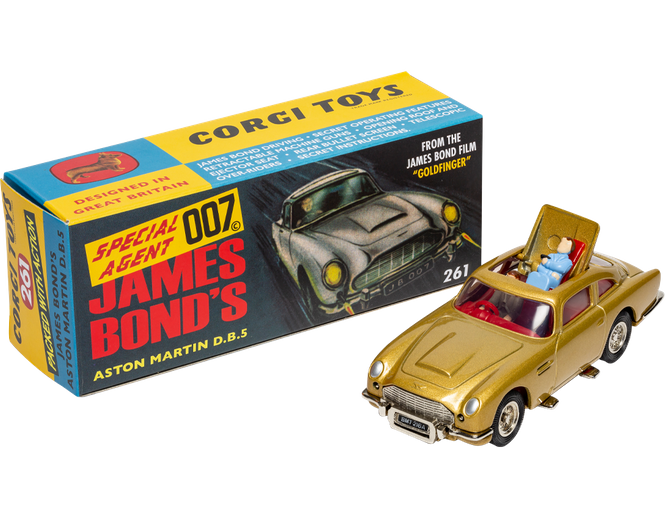
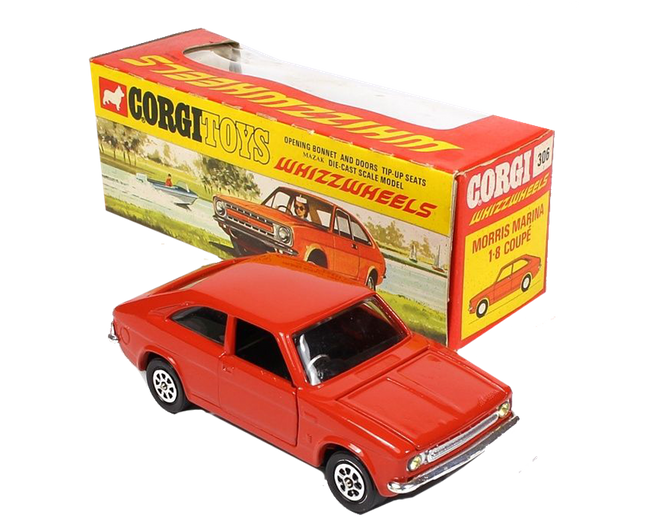
1970s
The Beginning
- In 1970 Corgi introduces the ‘Whizzwheels’ range to compete with Mattel’s Hot Wheels series, featuring frictionless wheels to increase playability.
- In 1971, Philipp Ullman, founder of the company passed away.
- Mettoy enters a five year agreement with American manufacturer Fisher-Price to produce their range of toys for distribution in Europe.
- In November 1979, the Dinky Toys factory in Binns Road, Liverpool closes.
1980s
Back in Business
- Corgi introduces electrostatic painting at its Swansea factory. This state-of-the-art painting technology improves the finish of its models.
- Pad painting is also introduced during the 1980s to take over the application of lettering and logos instead of labels.
- In 1989 the Corgi brand is sold to Mattel, with the factory in Swansea retained as part of Microlink Industries. For a time, Mattel owns the brand names of Corgi, Dinky and Matchbox.
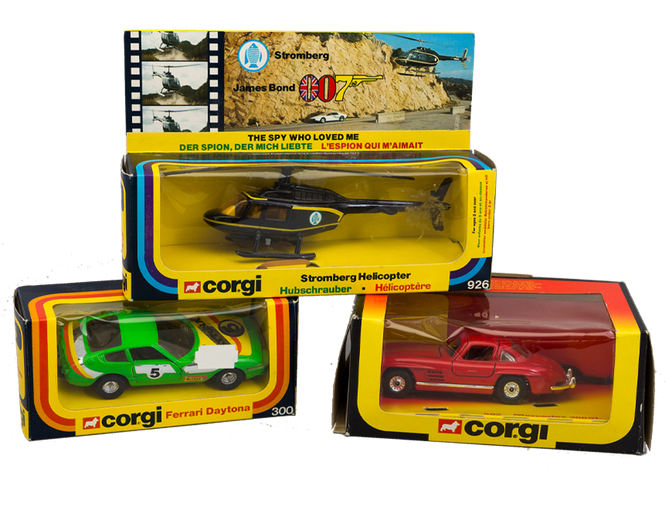
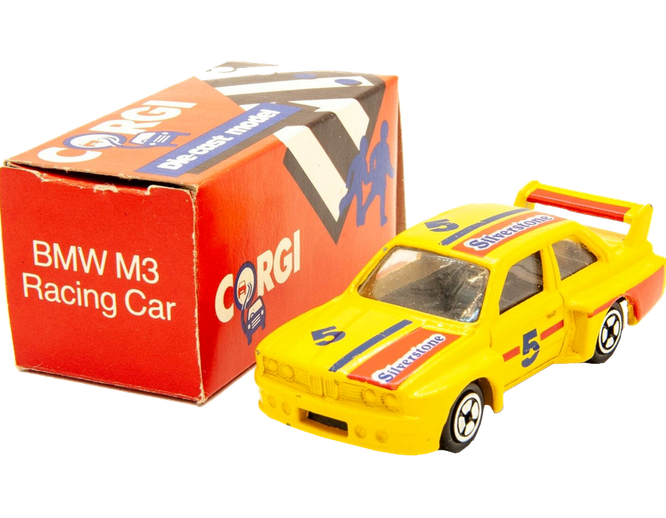
1990s
A New Era
- In 1990 production of Corgi Toys is moved to China and the first Corgi model to be made in China is launched.
- Corgi regains its independence from Mattel as a new company in 1995. Renamed as ‘Corgi Classics Limited’, the company moves to new headquarters in Leicester.
- In 1999, Corgi is taken over by American product collector specialist Zindart International Limited and begins a huge expansion of the product range. The rights to Lledo and Vanguards 1:43 scale die-cast vehicles are acquired, and the brand introduces two key new product ranges – the Aviation Archive range of scale aircraft and the Original Omnibus Company series of 1:76 scale buses.
- Zindart International Limited is renamed to ‘Corgi International Limited’.
2000s
Hornby Hobbies
- In 2004, Corgi secures a global license from Warner Brothers to produce models inspired by DC Comics' Batman comic book series. In the next few years numerous entertainment licensing rights are also be acquired, including the Harry Potter and Star Trek franchises.
- In 2006, Corgi celebrates its 50th Anniversary.
- In 2008, Hornby Hobbies Ltd acquires Corgi for £8.3 million, sitting alongside the iconic British Toy Brands of Hornby, Scalextric and Airfix.


2010s
A New Market
- A new line of toy vehicles aimed at pre-school children is introduced named Corgi Chunkies, covering lorries, tanks, construction vehicles and more.
- Corgi publishes its first Die-Cast Diaries and Aerodrome blog in 2015, providing an in-depth look behind the scenes and ongoing updates on the status of newly announced products.
- LiDAR scanning is introduced to the Corgi development process, allowing full size vehicles and aircraft to be scanned to replicate incredible accuracy in the final scaled die-cast product.
2020s - Present
Looking Beyond
- In 2021, Corgi re-issues the Aston Martin DB5 from 'Goldfinger' in recreation packaging of the original release.
- 2022 sees the introduction of the first 1:12 scale motorcycle in the Corgi range, the Triumph Scrambler 1200 seen in the 25th James Bond film ‘No Time To Die’.
